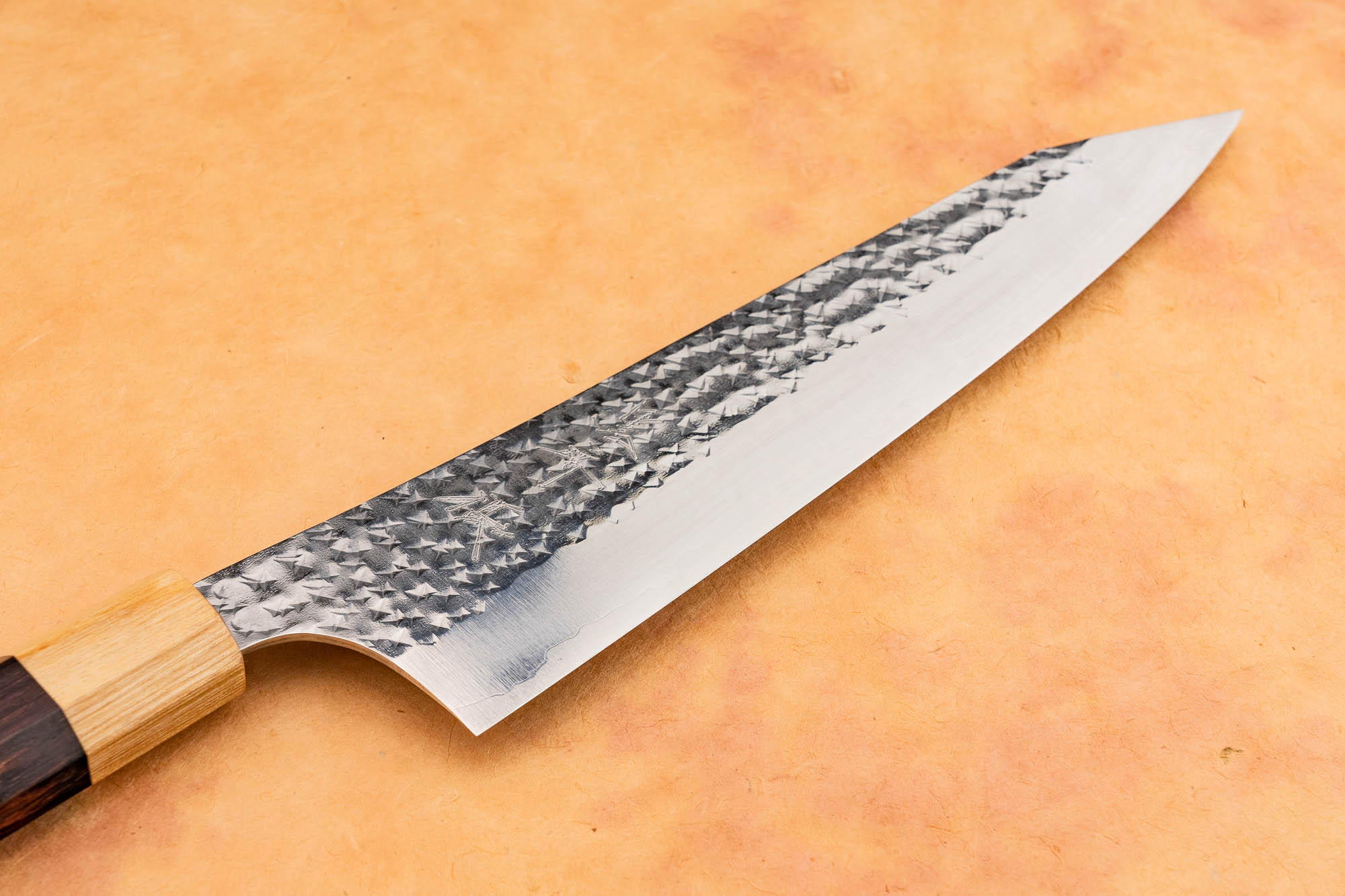- Joined
- Jun 20, 2023
- Messages
- 2
Hey y'all
First time posting a thread. I looked high and low for a post on this topic but couldn't find anything, if this has been asked before I'm sorry!
Here goes - I'm looking to replicate a yu kurosaki senko finish. I'm not against hand sanding a knife, but keeping the forged finish and tsuchime is important to me. I'm working with AEB-L, and bead blasting at 30psi with 80grit media)
I've tried bead blasting and mother's mag polish, But was never able to got a good polish. I saw somewhere that a bead blasted then muriatic soak could do it but wanted to ask before learning safe acid handling.
I looked into in some electropolishing but achieving that in the workshop without aforementioned lack of acid handling has been impossible, but really seems best left to pros
I have a buffer, but avoid it due to the danger and it doesn't seem to get the deeper divots.
Thanks for looking!
(Edited to add specific knife steel and current bead blasting grit and psi)

First time posting a thread. I looked high and low for a post on this topic but couldn't find anything, if this has been asked before I'm sorry!
Here goes - I'm looking to replicate a yu kurosaki senko finish. I'm not against hand sanding a knife, but keeping the forged finish and tsuchime is important to me. I'm working with AEB-L, and bead blasting at 30psi with 80grit media)
I've tried bead blasting and mother's mag polish, But was never able to got a good polish. I saw somewhere that a bead blasted then muriatic soak could do it but wanted to ask before learning safe acid handling.
I looked into in some electropolishing but achieving that in the workshop without aforementioned lack of acid handling has been impossible, but really seems best left to pros
I have a buffer, but avoid it due to the danger and it doesn't seem to get the deeper divots.
Thanks for looking!
(Edited to add specific knife steel and current bead blasting grit and psi)

Last edited:
